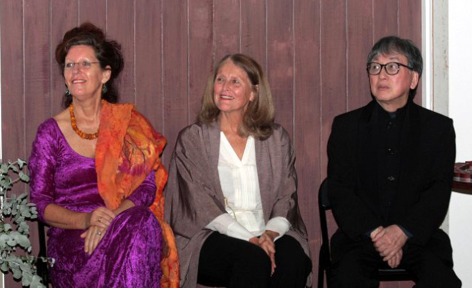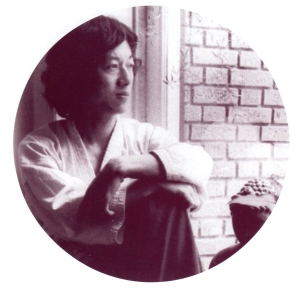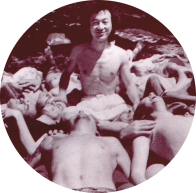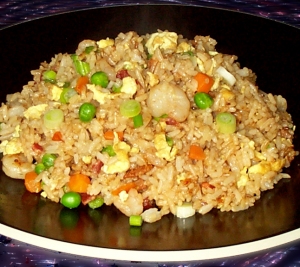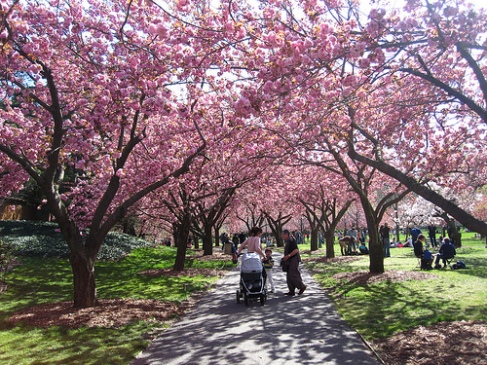Back to Melbourne
This article appears in the first quarter issue of Pointers Magazine published by The Shiatsu Therapy Association of Australia. For a message from Ohashi and for more information about his upcoming April 2017 courses, tutorials and sessions at the Australian Shitatsu College in Melbourne, click here.
About Ohashi
Ohashi was born in Hiroshima, Japan in 1944. Because of World War II, he experienced starvation and general deprivation, which caused a weak constitution. The condition of his biological health over the years informed his interest in traditional medicine, which he used to survive the problems caused by his childhood. Eventually, his personal experiences using and learning about traditional medicine brought him to develop his skills in healing, and then to disseminate his philosophy about health and life to other cultures.
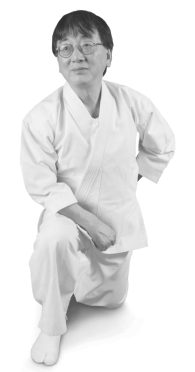 In 1974 he founded the Ohashi Institute in New York City, a nonprofit educational institution, which offered shiatsu education and training in the United States and eventually to several other countries. Through the educational program developed by the Institute, and through teaching for other organizations, he has taught thousands of students in more than 27 countries over more than 40 years. He has also had the honor of treating many famous people over the years, including Liza Minnelli, Margot Fonteyn, Ivan Nagy, Henry Kissinger, and Mohammed Ali.
In 1974 he founded the Ohashi Institute in New York City, a nonprofit educational institution, which offered shiatsu education and training in the United States and eventually to several other countries. Through the educational program developed by the Institute, and through teaching for other organizations, he has taught thousands of students in more than 27 countries over more than 40 years. He has also had the honor of treating many famous people over the years, including Liza Minnelli, Margot Fonteyn, Ivan Nagy, Henry Kissinger, and Mohammed Ali.
Ohashi has written six books on shiatsu and Oriental medicine, and produced 10 videos on his methods and techniques. His most popular book among professionals and laypeople is Reading the Body, which has been translated into 8 languages, a testament to its holistic representation of the human experience.
Ohashi and his son Kazuhiro visited the Australian Shiatsu College for the first time in 2015, when Ohashi came to teach. They were honored to be present for ASC’s 30th anniversary’s celebration, and are very pleased to return in April 2017 to teach three courses.
From Theory to Practice
Ohashi’s teaching spans both the intellectual aspect of Oriental Medicine as well as the practical side. The vast amount of information that Ohashi has gained from his intensive studies and many years of teaching and practice comes through in his courses. While information is mostly free and attainable, learning from Ohashi’s practical experience is invaluable. The three courses Ohashi will teach as ASC in April 2017 progressively illustrate how the fundamental philosophy and knowledge in his teachings inform his practical methods with therapeutic applications.
Ohashi’s Oriental Diagnosis
The Oriental medical modalities, such as acupuncture, Kan-poc (herbal teas), and shiatsu are forms of treatment and as well as means of diagnosis. You start your treatment in order to diagnose, then you start your diagnosis in order to treat. Treatment and diagnosis occur simultaneously. As a shiatsu therapist if you do not know how to diagnose, you cannot treat your clients. Therefore, it is helpful to study Oriental diagnosis to gain the knowledge you need to effectively treat clients.
In his course this year, Ohashi will cover aspects of this topic that bodywork practitioners and psychologists and other professionals will find useful for their work. Understanding that each human being is a totality — a unified whole of body, mind and spirit — provides the Oriental diagnostician, shiatsu practitioner or counselor, deeper insights necessary to understand imbalances with human nature.
First, he discusses fundamental advice about Oriental Diagnosis; the differences in diagnosis between Eastern and Western medicine; and the four types of diagnosis in Oriental Medicine: Bo Shin; Setsu Shin; Mon Shin; Bun Shin. He then moves on to specific information about the face, with a discussion of its three zones — forehead, mid-region, and jaw and what is considered a balanced face. Ohashi will then lecture on individual features of the face: Forehead and its lines; Eyebrows; Eyes; Eye bags; Nose; Bridge of the nose; Philtrum; Mouth; Teeth; Ears.
The next section of the course covers areas of the body: the back, the hara, and feet. He will include bi-lateral distortions and how to correct them with shiatsu. He will demonstrate and students will practice on each other. Ohashi’s Oriental Diagnosis course ends with an analysis of shoes — his famous shoe diagnosis. In this segment a helper will pick up four pairs of shoes — two female and one male — which Ohashi skillfully analyzes the wearer’s health, financial condition and offers advice.

“Ohashi’s Oriental Diagnosis” course embraces useful diagnostic information you can apply immediately to your practice; the practical part of the course will help you to incorporate these techniques into your practice to enrich your treatments, making your clients healthier and happier.
Psychology of the Meridians
Life is chaos, which evolutes every minute. If we imagine ourselves as an ever-changing amoeba, we see that our psychological states manifest themselves into physical conditions. For example, consider a starving man. Physically his body requires nutrients. He craves food. Indeed, his entire body and mind are focused on finding food. His brain sends a signal to his eyes to look for food. His sense of smell is heightened to find the specific odor he craves. As he sees and smells something to eat, his mouth starts to water, beginning the digestive process even before he obtains food.
As the saliva moves down his esophagus into his stomach, his legs are told to move forward, towards the food, his second largest toe leading his entire body. Imagine the line of physical reactions from his brain to his eyes, nose, and mouth, down to his stomach and finally all the way to his legs and toes. The path follows the stomach meridian. When we have experienced starvation in our life, the stomach meridian may tend to be more Jitsu, resulting in an overabundance of ki energy, which helps us to obtain the food we need. Understanding this individual’s psychology can help us in caring for him. Will he need sedation on his stomach meridian? How does he react to stronger pressure on ST36 (Ashi San Ri)? Also consider this person’s lifestyle. Does he eat too much too fast? Would you describe his personality as neurotic? Are his meals irregular and distracted; is his appetite influenced by his moods. Perhaps his stomach meridian is kyo –– a deficit of ki energy. Aspects of both hypo and hyper conditions exist in the same person, along the same meridian and even the same tsubo. Pressing along his meridian, tonifying or sedating the ki energy, can help with the physical manifestations of this imbalance.
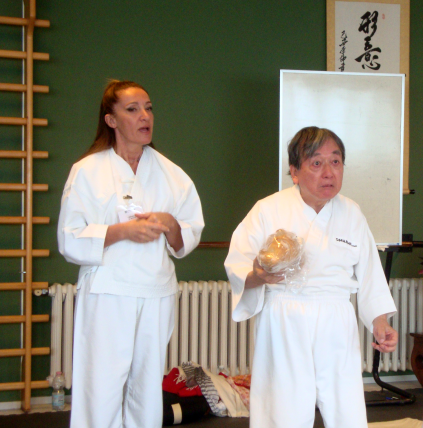
During his “Psychology of the Meridians” course, Ohashi demonstrates how these psychological states affect our bodies, and how Ohashiatsu® can be used on the body to influence the receiver’s psychological state. He explains his idea of the Birth of Meridians from a pictorial reference, for example, picturing the position and flow of the stomach meridian as a manifestation of childhood starvation. He will go through all 12 meridians from the reference of their “birth”, discussing and demonstrating their influence on the psycho-emotional states in mankind. Participants will learn 12 Meridian exercises that incorporate the psycho-emotion characteristic of each meridian. Participants will practice on each other, focusing on appropriate treatment for each meridian and emotion.
Muscle Meridian Sedation
Ohashi’s final course will be the practical application of techniques that sedate both muscles and meridians. These are techniques he developed over many years working with dancers and other clients with physical injuries, especially when a distortion was caused by a muscle. If a meridian is close to that muscle or muscle group, it is helpful to use pressure on the tsubos while tonifying the muscle.

Through observation you can determine where your receiver might need a stronger technique to quickly and effectively maximize the results of treatment. Imagine your client is storing an excess of jitsu energy in the neck, which caused her or him to complain of tension and headaches. S/he is nervous, busy, worried and stressed. The accumulation of painful energy causes anxiety about having the neck touched. So instead you work the cranial area, the shoulders and maybe the lower back. Once the client is relaxed and ready to receive a strong sedation, you can proceed to the neck, using a stronger technique that brings the desired result.
Immediately your receiver feels the relief from the excess energy stored in the neck for so long. The energy can slow again, which makes her/him feel opened up and happy. This is the basic concept of sedation. It’s a practical application of a powerful technique to complement your entire treatment. Sedation, when used sparingly, is the perfect addition to your practice regardless of modality.
The Australian Shiatsu College is pleased to sponsor Ohashi’s teachings in Melbourne in April, 2017. From his always entertaining and informational Oriental Diagnosis course, to his fascinating Psychology of the Meridians class, and finally his practical Muscle Meridian Sedation workshop, students will experience the breadth of Ohashi’s knowledge, experience and joy of teaching.
EARLY REGISTRATION ENDS MARCH 1
Register Early by March 1 and Receive these Discounts!
Enroll for all Three Courses: $975. SAVE $210 ($1350)
Take Any Two Courses: $680. SAVE $110 ($900)
Take Any One Course: $395. SAVE $55 ($450)
A.S.C. current, former and Ohashi’s 2015 course participants:
Receive an additional 10% discount when registered by March 1.
After March 1: $450 per course
